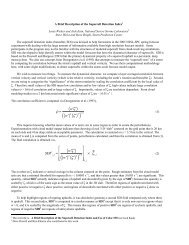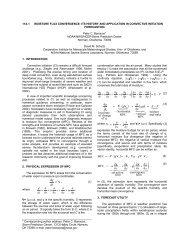Program Overview and Operations Plan - Storm Prediction Center ...
Program Overview and Operations Plan - Storm Prediction Center ...
Program Overview and Operations Plan - Storm Prediction Center ...
You also want an ePaper? Increase the reach of your titles
YUMPU automatically turns print PDFs into web optimized ePapers that Google loves.
I. Historical Perspective<br />
Co-location of the <strong>Storm</strong> <strong>Prediction</strong> <strong>Center</strong> (SPC) with the National Severe <strong>Storm</strong>s Laboratory<br />
(NSSL) <strong>and</strong> other agencies in the Norman, OK Weather <strong>Center</strong> has facilitated considerable<br />
interaction <strong>and</strong> collaboration on a variety of experimental forecast <strong>and</strong> other operationally relevant<br />
research programs. A wide cross section of local <strong>and</strong> visiting forecasters <strong>and</strong> researchers has<br />
participated in a number of programs over the past six years. These include forecasting support<br />
for field programs such as IHOP, establishing the SPC winter weather mesoscale discussion<br />
product, evaluating operational <strong>and</strong> experimental NWP models for application in convective<br />
forecasting, <strong>and</strong> integrating new observational data, objectives analyses <strong>and</strong> display tools into<br />
forecast operations. A key goal of these programs is to improve forecasts of meteorological<br />
phenomena by speeding up the transfer of new technology <strong>and</strong> research ideas into forecast<br />
operations at the SPC, <strong>and</strong> sharing new techniques, skills, <strong>and</strong> results of applied research more<br />
freely. Typical issues addressed in these activities include, but are not limited to: data overload<br />
concerns in operations, testing <strong>and</strong> evaluation of new analysis or predictive (NWP) models, better<br />
underst<strong>and</strong>ing of operational forecast problems, development <strong>and</strong> evaluation of diagnostic<br />
conceptual models, <strong>and</strong> new product development <strong>and</strong> display strategies.<br />
During the Spring of 2000 <strong>and</strong> 2001, these collaborative programs focused on critical SPC<br />
operational products including the short term predictability of severe <strong>and</strong> non-severe<br />
thunderstorms <strong>and</strong> potential impact on operational convective watch lead time. During the Spring<br />
of 2002, the program focused on providing forecasting support for the IHOP field project,<br />
primarily addressing afternoon convective initiation <strong>and</strong> nocturnal MCS development.<br />
Details about earlier Spring <strong>Program</strong>s are available at:<br />
www.spc.noaa.gov/exper/Spring_2000<br />
www.spc.noaa.gov/exper/Spring_2001<br />
www.spc.noaa.gov/exper/Spring_2002<br />
This document will provide an overview of logistical, personnel, planning <strong>and</strong> verification issues<br />
involved in the Spring <strong>Program</strong> for 2003.<br />
II.<br />
<strong>Program</strong> Motivation, Goals <strong>and</strong> Objectives<br />
The prediction of convective weather is important from both meteorological <strong>and</strong> public<br />
service/societal impact perspectives. Since a primary mission of the National Weather Service is<br />
the protection of life <strong>and</strong> property from hazardous weather phenomena, applied research aimed at<br />
improving the forecasting of severe thunderstorms <strong>and</strong> tornadoes is a critical responsibility at the<br />
<strong>Storm</strong> <strong>Prediction</strong> <strong>Center</strong> (SPC) <strong>and</strong> the National Severe <strong>Storm</strong>s Laboratory (NSSL).<br />
The SPC is responsible for the prediction of severe convective weather over the contiguous<br />
United States on time scales ranging from several hours to three days. To meet these<br />
responsibilities, the SPC issues Convective Outlooks for the Day 1, Day 2 <strong>and</strong> Day 3 periods to<br />
highlight regions with enhanced potential for severe thunderstorms (defined as thunderstorms<br />
producing hail > 3/4 inch in diameter, wind gusts > 50 kt or thunderstorm induced wind damage,<br />
or tornadoes). These outlooks are issued in both categorical (slight, moderate, or high risk) <strong>and</strong><br />
1


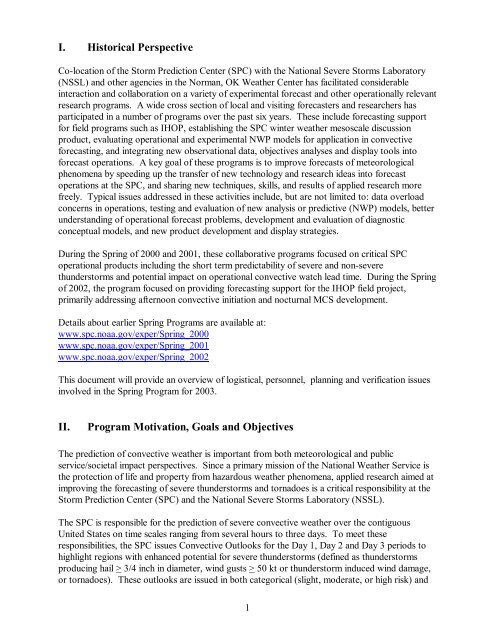
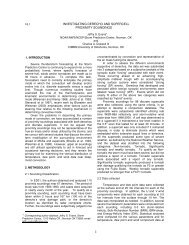
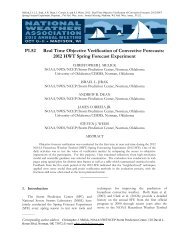
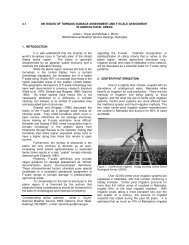
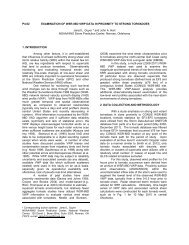
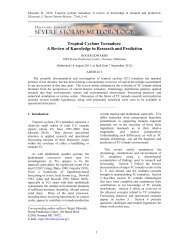


![NSWW_ROC_Overview.ppt [Read-Only] - Storm Prediction Center ...](https://img.yumpu.com/26478320/1/190x146/nsww-roc-overviewppt-read-only-storm-prediction-center-.jpg?quality=85)
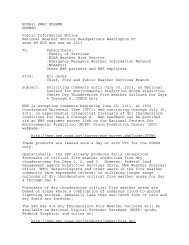
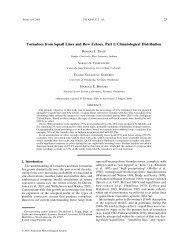

![NEW_PRODUCTS_imy.ppt [Read-Only] - Storm Prediction Center ...](https://img.yumpu.com/26478296/1/190x146/new-products-imyppt-read-only-storm-prediction-center-.jpg?quality=85)
